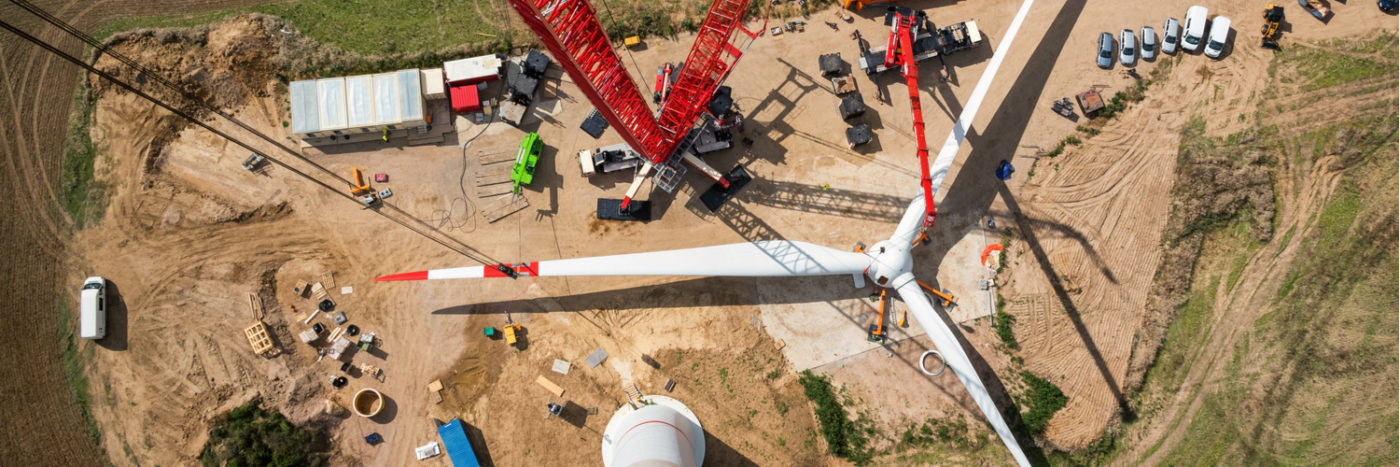The number of applications for planning permission by new renewable energy projects reached a four-year high in the UK last year as demand for clean electricity continues to grow.
According to an analysis of government data by energy consultancy PX Group, planning applications submitted across the UK for new wind, solar and bioenergy projects leapt from 204 in 2018 to 269 in 2019.
Analysis revealed that the jump in applications in 2019 was the largest annual increase in recent years and 75% higher than the number of annual planning submissions made three years ago. 2016 saw just 154 submissions which rose to 185 in 2017. The increase is especially significant as it marks four consistent years of growth.
The consultancy said that this big increase was due to a growing appetite among energy companies to invest in new renewable projects to help cut carbon emissions and reach the UK’s climate goals.
Though it will take some years for these applications to be fulfilled it is very important to have a healthy pipeline of projects to ensure continued growth.
Geoff Holmes, the Chief Executive of PX Group, said:
“It goes without saying that as more of these projects get off the ground, the faster the UK can get to a point where clean, green sources provide an even greater share of the UK’s energy. Of course, there is a lag time between submitting plans to councils and projects becoming fully operational, so more projects being in the pipeline is not a quick fix.”
In addition to this, because technology costs are falling and financiers are offering more support, clean energy developers are also able to roll out more projects.
It is also expected that planning applications will rise in the years ahead due to the government’s decision earlier this month to lift a block against subsidising onshore wind projects that was put in place almost five years ago.
The UK suffered a sharp decline in the number of new onshore windfarms since the block was put in place by David Cameron in 2016. The ongoing production of new onshore wind capacity fell to its lowest level since 2015 last year leading to warnings that the UK risked missing its climate targets.
According to Energy Analysis provider EnAppSys the UK is already seeing the effect of the energy transition with renewables “on the brink” of becoming the main electricity source. The amount of UK electricity coming from renewables at 104.8TWh came close to the amount coming from gas-fired power stations at 115.1TWh in 2019.
Unsurprisingly, applications for wind power projects in the UK have seen particular growth in recent years, growing from 47 applications in 2018 to 90 in 2019.
The government has shown strong support for offshore wind after pledges were made by the government during the Queen’s speech for the country to aim for 40GW by 2030.
The government last month said that from 2020 onshore wind developers will be allowed to compete for subsidies at auction alongside solar power developments and floating offshore wind projects.
The UK energy sector widely welcomed the announcement of a new contracts for difference auction for onshore wind and solar in early March especially given the lack of subsidy and support in recent times. The uptake of both technologies has slowed down despite the considerable reduction in their cost.
In order to qualify for the auction process, windfarm developers will have to comply with tough new proposals on community consent under the new plans drawn up. Projects planned for England will also need the consent of the local community through existing planning codes.
Some renewable energy developers including Scottish Power have already begun planning for a big expansion of onshore windfarm projects having expected a government U-turn on support for wind power projects.
The chief executive of Scottish Power, Keith Anderson, said the decision to back onshore wind was “one of the first clear signs that the government really means business” on reaching its climate targets.
Despite the global economic slowdown brought about by the coronavirus outbreak and a crash in oil market prices, the global energy watchdog made governments aware that they will need to use climate policies and economic stimulus packages to support continual progress in the clean energy sector.
Fatih Birol, the head of the International Energy Agency, said governments “should not allow today’s crisis to compromise the clean energy transition”.
He went on to say:
“These challenging market conditions will be a clear test for government commitments. But the good news is that, compared to economic stimulus packages of the past, we have much cheaper renewable technologies, have made major progress in electric vehicles and there is a supportive financial community for the clean energy transition. If the right policies are put in place there are opportunities to make the best of this situation.”

